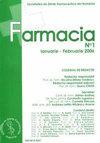EFFECT OF CARBON DIOXIDE LASER COMBINED WITH ANTI-HPV BIOLOGICAL PROTEIN DRESSING ON HPV LOAD IN PATIENTS WITH CONDYLOMA ACUMINATUM
IF 1.3
4区 医学
Q4 PHARMACOLOGY & PHARMACY
引用次数: 0
Abstract
The aim of this study was to investigate the therapeutic effect of a carbon dioxide (CO 2 ) laser combined with an anti-human papillomavirus (HPV) biological protein dressing on patients with condyloma acuminata (CA). In this study, male CA patients in the hospital were selected as research subjects and enrolled into the control group (30 cases, CO 2 laser treatment) and the observation group (30 cases, CO 2 laser combined with anti-HPV biological protein dressing treatment). The viral DNA load of the two groups was determined and compared before treatment, after treatment and at 18 months of follow-up. The treatment response rate and relapse rate of the two groups were also compared. After 18 months, both control and observation viral DNA loads were significantly lower (p < 0.05). After treatment and 18 months of follow-up, the viral DNA loads in the observation group were significantly lower than the viral DNA loads in the control group (p < 0.05). The efficacy rate (93.33%) of the observation group was significantly higher than that of the control group (63.33%), the long-term recurrence rate (13.33%) was significantly lower than that of the control group (43.33%), and the adverse reaction rate (23.33%) of the observation group was significantly lower than that of the control group (56.67%) (all p < 0.05). Therefore, a CO 2 laser combined with an anti-HPV biologic protein dressing can significantly reduce the HPV load in CA patients, improving the cure rate and reducing the recurrence rate.二氧化碳激光联合抗 HPV 生物蛋白敷料对尖锐湿疣患者 HPV 感染的影响
本研究旨在探讨二氧化碳(CO2)激光联合抗人乳头瘤病毒(HPV)生物蛋白敷料对尖锐湿疣(CA)患者的治疗效果。本研究选取该院男性尖锐湿疣患者作为研究对象,分为对照组(30 例,二氧化碳激光治疗)和观察组(30 例,二氧化碳激光联合抗 HPV 生物蛋白敷料治疗)。两组患者在治疗前、治疗后和随访 18 个月时的病毒 DNA 载量均进行了测定和比较。两组的治疗反应率和复发率也进行了比较。18 个月后,对照组和观察组的病毒 DNA 量均显著降低(P < 0.05)。经过治疗和18个月的随访,观察组的病毒DNA载量明显低于对照组(P < 0.05)。观察组的有效率(93.33%)明显高于对照组(63.33%),长期复发率(13.33%)明显低于对照组(43.33%),观察组的不良反应率(23.33%)明显低于对照组(56.67%)(均 p < 0.05)。因此,二氧化碳激光联合抗HPV生物蛋白敷料可显著降低CA患者的HPV载量,提高治愈率,降低复发率。
本文章由计算机程序翻译,如有差异,请以英文原文为准。
求助全文
约1分钟内获得全文
求助全文
来源期刊

FARMACIA
医学-药学
CiteScore
2.40
自引率
50.00%
发文量
59
审稿时长
6-12 weeks
期刊介绍:
FARMACIA publishes original research papers, invited topical reviews and editorial commentaries and news, with emphasis on conceptual novelty and scientific quality. Main research areas are focused on: pharmacology, toxicology, medicinal chemistry, biopharmacy, drug design, drug delivery, personalized medicine, nanostructures, nutraceuticals, biochemistry and biotechnology. Manuscripts submitted to the Journal are only accepted after the peer review precess. The papers should have not been published in any other journal. The recommendations of the Declaration of Helsinki, for humans, and the International guidelines as accepted principles for the use of experimental animals should be followed.
 求助内容:
求助内容: 应助结果提醒方式:
应助结果提醒方式:


